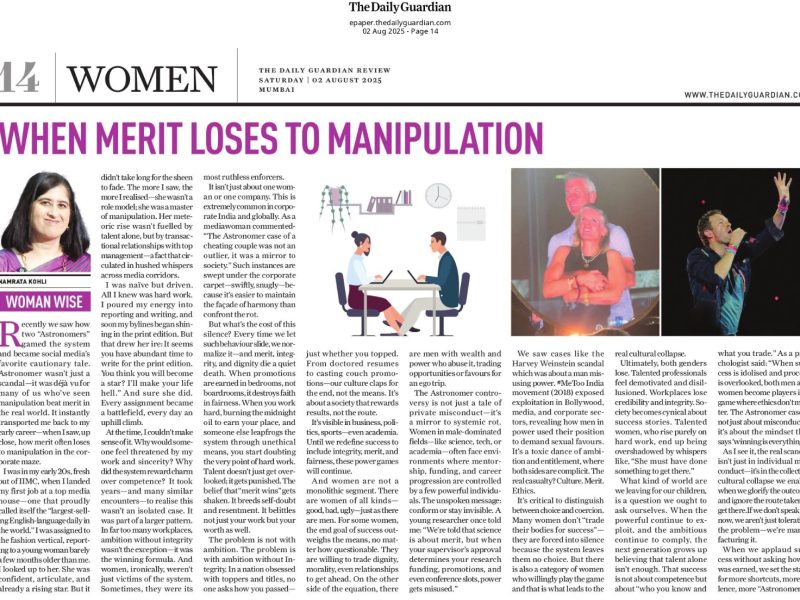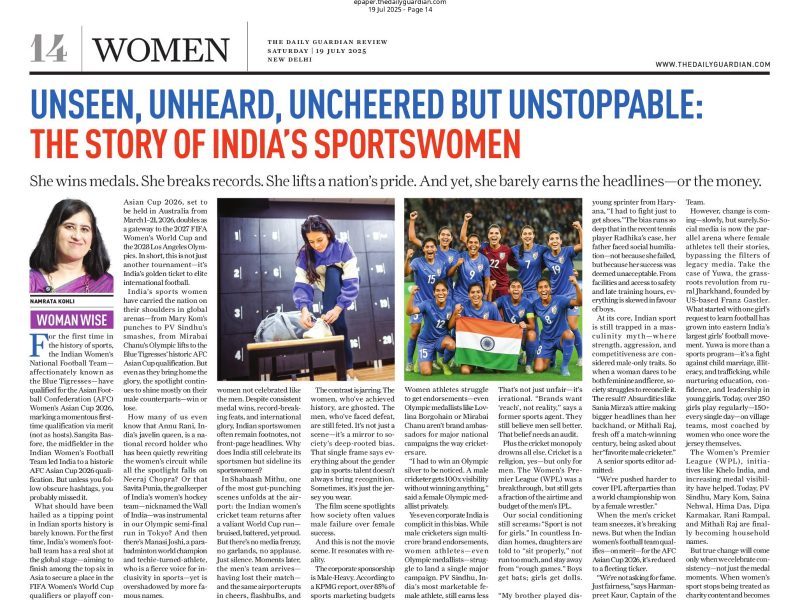Snow White was the angelic figure with “skin as white as snow” thereby relating a certain skin color to inner and outer Beauty, but in some ways stereotyping people with darker skin to as witches.
“As a woman, it is difficult to be heard. But when you are a black (dark-skinned) woman, you are invisible,” Kerala’s Chief Secretary Sarada Muraleedharan recently spoke out against discrimination at work, on the basis of skin colour. She was simply calling out a bias deeply embedded in our society.
Fair skin is seen as “superior” while darker skin as “native” or “subordinate.” There is a strange association of fairness with power, privilege, and prestige. Certainly, colorism has colonial roots in Indian society- as the British poet Rudyard Kipling emphasized it with “The White Man’s Burden” alluding to the idea that the civilized world is all the white skinned westerners, who have a moral obligation to “civilize” the other part of this world which is non-white. But even in pre-colonial times, the upper castes (often indoors) tended to be lighter-skinned than manual labourers who worked under the sun. Over centuries, this reinforced the idea that lighter skin is equivalent to higher status, gaining ground within our society.
Look at the marriage market “Wanted: fair, beautiful bride”—it’s normalized casteist, classist colorism where fair skin is rated high and “gori chitti” bahu is a prized possession most would love to flaunt. Conversely, you become a depreciating asset if you are dark. Many Indians have absorbed these ideals and passed them down—mothers telling daughters to avoid tanning under sun, or start using fairness creams before weddings. It’s not just about the skin colour—it’s tied to ideas of success, femininity, desirability, and sometimes even morality.

Snow White has been part of the princess cannon – a story passed on for several generations which has influenced little girls to become more aware of their appearances. Snow White was the angelic figure with “skin as white as snow” thereby relating a certain skin color to inner and outer Beauty, but in some ways stereotyping people with darker skin to as witches.
Look at the success of bleaching products and skin-lightening which is still a multi-thousand crore industry in India. I can tell you from experience of keeping full time maids from Jharkhand (tribal community) – everytime they would come home back from the village, after toothpaste they would rush to the bania shop downstairs to get a tube of Fair & Lovely. These hard-working noble souls were not convinced that they looked beautiful the way they were – they were raised to believe that there is something deeply wrong with their dark complexion, which needed to be “fixed”. It was only in 2020 that Hindustan Lever renamed its age-old product Fair and Lovely to Glow & Lovely. They also removed words like white, whitening, light, and lightning from its packs, promotional messages, and communications.
I know of a dear friend- a Telugu lawyer Sivaleela who came to Delhi with her family- husband and two teenage children. The kids went through a nightmare. They were subject to comments like Kaala kauwa, kaala bhoot, kaala kaloota (black crow, black ghost, blacky), black as coal from classmates (in a respected Delhi school, mind you), neighbours, strangers. Her son Kartik would say that his classmates would club all South Indians under one bracket – Madrasi. And he said Bollywood has not helped either as it has reinforced stereotypes – like the oily-haired, ayyayyo– spouting, vibhuti-sporting ‘Madrasi’ stock character in old Hindi cinema, are relatively innocuous manifestations of a problem so deep rooted that most of us scarcely notice it. Her mom, being an adult, couldn’t care less for these comments but even she shared how she had been taught to treat the sun as her enemy and not friend. To spend time in the sun meant a chance for her skin to potentially become several shades darker – a then frightening prospect for an already dark-skinned desi person.

In the 21st century, it is inconceivable and unforgivable that we are still struggling with skin colour issues even now in India. The caste system perpetrated it. But we must understand that this caste system essentially began as division of labor. If your father was a carpenter, you learned carpentry at home from your childhood and became a good carpenter. Skills were transmitted from generation to generation by maintaining this caste system. But today we have educational and technological institutions. Largely, transfer of skill does not happen through family anymore. The caste system is no longer relevant in today’s day and age and neither is the discrimination. As Sadhguru says – “If we can bring a nationwide social security system and an education system which will transmit skills to everyone according to their aptitude, the caste system will go away.” With technology, education giving access to everyone and cutting across all caste and gender divides, there is no place for biases based on caste, creed, colour.
Today’s generation is pushing back hard. Social media is calling out colorism. Influencers flaunt dusky skin proudly. Brands face major backlash for fairness messaging. Campaigns like #UnfairAndLovely and celebs like Nandita Das, Radhika Apte, and Sayani Gupta have brought this bias into national conversation.
If you look at the matrimonial ads, there is some decrease in the number of ads asking for fair skinned brides. In fact, recently Dove led a transformative #Stop-The Beauty Test campaign challenging beauty bias in arranged marriages. These ‘mothermonials’ where you see a girl from the eyes of a mother, aimed to change how daughters are described in matrimonial biodatas, shifting the emphasis away from height, weight, and colour and instead describe them based on her qualities, hobbies, skills, and quirks, not just looks.
Finally either we Glow Up or Grow Up? India’s fairness fetish surely needs a Makeover.




